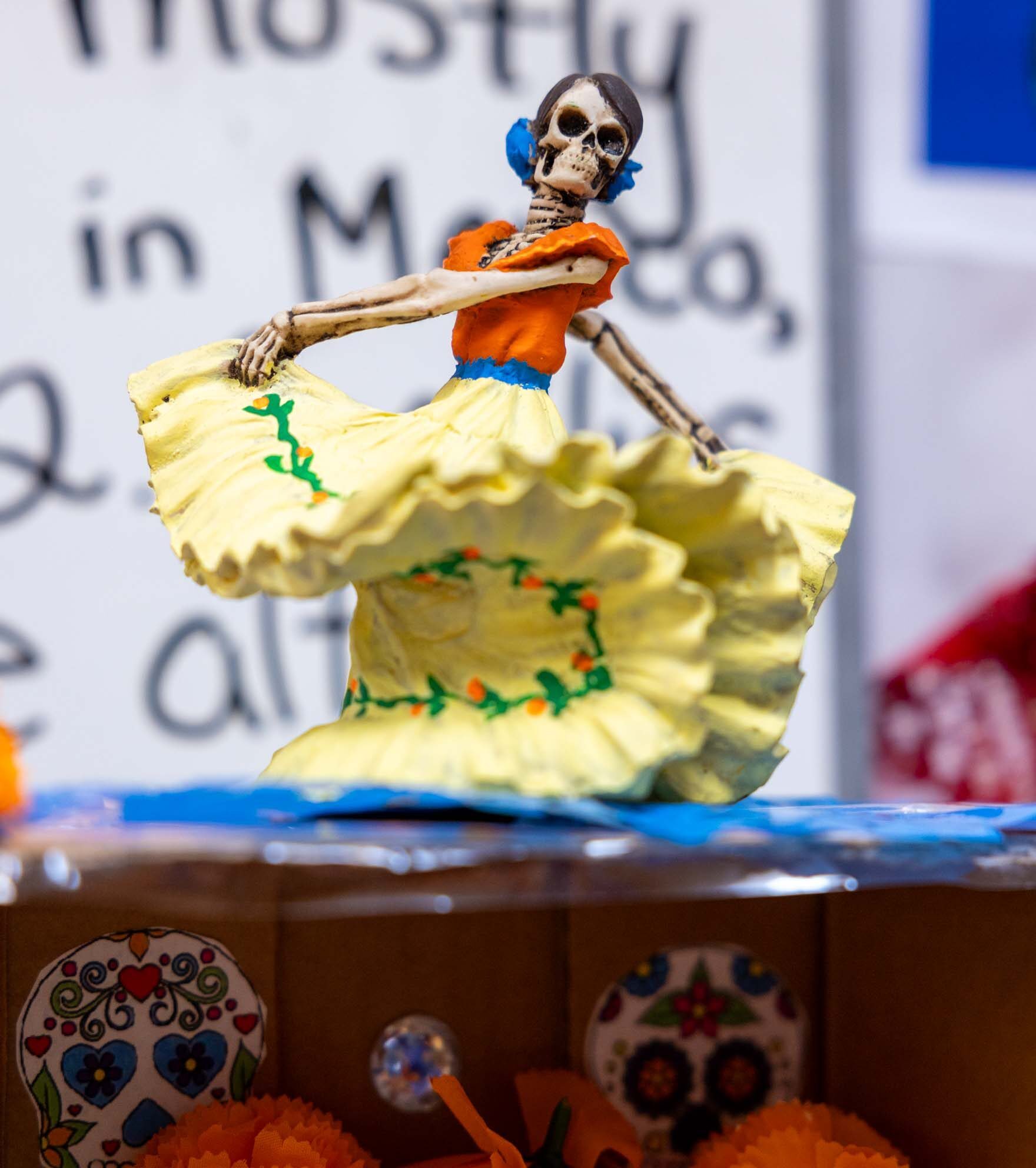Just past Calgary Academy’s Black Box Theatre lies the Spanish room. Student projects hang around the door, and inside, the classroom walls are filled with various posters, projects, flags, and other Spanish-themed decorations. The room is comforting, creating a captivating space to learn in.
Integrated Studies teacher Jessica Fonseca understands that learning a second language is more than reading verbs off a whiteboard—combining conversation, culture, and her unique experiences into daily classroom teaching.
Language is Culture
Learning a second language is one of the most applicable skills students can develop, especially from a young age. To Ms. Fonseca, learning Spanish (or another language) can help someone not only navigate the world around them—Spanish is the fourth most spoken language worldwide—it can also help students work in a world that’s becoming more internationally connected than ever.
“Many people have travelling in common, and you will likely encounter a language situation. I tell my students, ‘if you’re in the middle of Madrid and trying to get around, what’s the first thing you do?’ Language is like a survival skill.”
 Described as a “jam-packed hour of learning,” Ms. Fonseca’s classes focus on conversation and culture. While learning the building blocks of a language is important, so is immersing oneself within the culture—real-life experiences matter just as much as the classroom.
Described as a “jam-packed hour of learning,” Ms. Fonseca’s classes focus on conversation and culture. While learning the building blocks of a language is important, so is immersing oneself within the culture—real-life experiences matter just as much as the classroom.
Ms. Fonseca utilizes Rosetta Stone as part of her curriculum to help students study at their current level while focusing class time on conversation-focused learning, off-campus trips, and cultural activities, like creating ofrendas for Día de los Muertos. To her, “learning language is opening the perspective of learning culture.”
Long-time Spanish student Sheyna C. finds that her classes offer unique experiences that can also prepare her for life after school. She remembers visiting a local market to converse fluently with Spanish speakers.
“Spanish prepares you if you want to do something with language in the future. If you get stuck in a country, you don’t need to know how to conjugate a verb… It prepares you for real-life experiences, like travelling, restaurants, and stores.” – Sheyna
Another essential element of Ms. Fonseca’s Spanish class is the use of her own experiences in life. Understanding that learning a new language can be difficult or even embarrassing for some students, she acts as a storyteller, recalling moments when she made her own errors.
Ms. Fonseca remembers travelling to Bali, attempting to speak the language with the locals and saying a phrase wrong. However, this “mistake” helped her connect with others, learn more about the language, and respect the culture she was in at the time. She’ll help her students feel comfortable in class making language mistakes—typically leading by example.
“Sometimes, I make a fool of myself in front of the students so that they can relax. We don’t laugh at each other—we laugh with each other.”
The Future of Language for CA Students
Language opens a world of opportunities for CA students, whether it’s learning other languages or benefitting their studies. Spanish is closely related to Portuguese, French, and Italian, making them easier to learn in the future. For students like Sheyna, Spanish grades can help with university applications or navigating the world when travelling.
“I love how students by the end of the program feel a sense of accomplishment when they can understand and self-express in a second language… I love seeing them happy and able to express themselves.” – Ms. Fonseca
While her Spanish class offers unique opportunities, Ms. Fonseca understands that not every student is interested in learning that subject. To help bring a wide variety of learning options to the school, she has helped bring a new pilot program Integrated Studies course to life at CA starting next semester for Senior School students: International Languages.
This course brings the ideas taught in Ms. Fonseca’s Spanish class to other languages, including French, Italian, German, Mandarin, and Japanese. Rosetta Stone-based learning and cultural immersion will help students learn a new language and gain an appreciation for other cultures.
While Ms. Fonseca can teach as much as she can during class, she knows that the real challenge is up to students when they leave CA. She hopes graduating students want to build upon their Spanish foundations.
“The truth is, learning a second language, it’s all exposure. You must embed it in your life every single day. I always tell my students that here in school, I’m going to give you 40%. Unless you put this language in your life, it’s hard to be completely fluent.”
